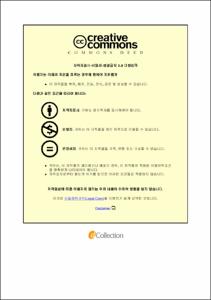Ulsan Univ. Repository
Thesis
General Graduate School
Mechanical & Automotive Engineering
2. Theses (Ph.D)
MANUFACTURING PROCESSES ASSISTED BY ATHERMAL EFFECT OF ELECTRIC CURRENT: RAPID HEAT TREATMENT AND SOLID STATE JOINING
- Alternative Title
- RAPID HEAT TREATMENT AND SOLID STATE JOINING
- Abstract
- Recently, electric pulse has been used in electrically assisted manufacturing (EAM) due to its processing efficiency by a combined effect of rapid resistance heating and athermal effect (electroplasticity) of the electric current. During electropulsing treatment or electrically assisted (EA) heat treatment, in addition to the well-known thermal effect by resistance heating, the athermal effect of electric current can additionally weaken the atomic bonding by inducing a charge imbalance near defects. Consequently, the annealing, recrystallization, and aging during electropulsing treatment can be significantly enhanced in comparison to conventional furnace heat treatment. Therefore, electric pulse is widely used in altering the mechanical behavior of the metallic materials and various manufacturing applications such as electrically assisted pressure joining (EAPJ), EA assisted rapid annealing, EA assisted crack healing, and EA assisted residual stress release etc. In this dissertation, the EA assisted rapid heat treatment and EA assisted fatigue damage healing of the aluminum clad steel and the EAPJ of various metal alloys are systematically investigated.
First, laminated metal sheets, aluminum clad steel (ACS), are heat treated by electrically assisted rapid heat treatment (subsecond duration) to rapidly enhance the formability of the ACS sheet while adjusting the intermetallic evolution. The effect of the electric current density on the intermetallic evolution and mechanical properties was experimentally evaluated by scanning electron microscope (SEM) and tensile test, respectively. The present study proves that the electrically assisted rapid heat treatment is an efficient method to balance the strength and formability of the ACS sheet.
Next, the fatigue damage evolution and EA assisted prolonged fatigue life of the ACS sheet are systematically investigated by characterizing the microstructural change at different fatigue cycles. The results show that the pile-up of geometrically necessary dislocations (GNDs) due to the incompatible deformation at the interface between the steel substrate and the Al clad layers significantly improves the mechanical properties of the ACS sheet in the monotonic tension test. However, cracks are prone to initiate at Al grains of the interface and propagate toward the Al side in the fatigue test due to a preferred accumulation of GNDs in the soft Al grains near the interface. Particularly, the fatigue life was significantly prolonged by electropulsing treatment with only a subsecond duration, which is resulted from the diminished density of piled GNDs and the retardation of microcrack formation at the interface. The present study elucidates the failure mechanism of ACS and proves that electropulsing treatment is an efficient method to prolong the fatigue life of laminated metal composites by healing the accumulated damage during the fatigue test.
Finally, solid-state joints of various combinations of dissimilar metal alloys, S45C and Al661-T6, additively manufactured AMMS1 and conventional SUS410, and SUS316L and SUS410, are successfully fabricated by EAPJ technique. Lap joining of dissimilar steel S45C and aluminum 6061-T6 alloy sheets in the solid state is conducted by means of EAPJ. Moreover, for the material combination of SUS316L and SUS410, the fatigue behavior of the joints is evaluated by a P-S-N curve using two-parameter Weibull distribution. For the joining of additively manufactured maraging steel and conventional SUS410, the base sample of additively manufactured cylindrical maraging steel specimen is fabricated to have a porous layer on the joining end, while another end is printed as a perfectly solid matrix. The porous layer significantly increases the maximum joining temperature by the locally increased electrical resistance and dramatically enhances the interfacial diffusion thickness. The effect of the porous layer on the microstructural evolution and mechanical properties is characterized by the electron back-scatter diffraction and quasi-static tensile test, respectively. The present study demonstrates that EAPJ is an efficient method in bulk and lap joining of dissimilar metal alloys combinations.
- Issued Date
- 2022
- Awarded Date
- 2022-08
- Type
- dissertation
- Alternative Author(s)
- Shengwei Zhang
- Affiliation
- 울산대학교
- Department
- 일반대학원 기계자동차공학과
- Advisor
- 홍성태
- Degree
- Doctor
- Publisher
- 울산대학교 일반대학원 기계자동차공학과
- Language
- eng
- Rights
- 울산대학교 논문은 저작권에 의해 보호 받습니다.
- Appears in Collections:
- Mechanical & Automotive Engineering > 2. Theses (Ph.D)
- 파일 목록
-
-
Download
 200000629885.pdf
기타 데이터 / 9.83 MB / Adobe PDF
200000629885.pdf
기타 데이터 / 9.83 MB / Adobe PDF
-
Items in Repository are protected by copyright, with all rights reserved, unless otherwise indicated.